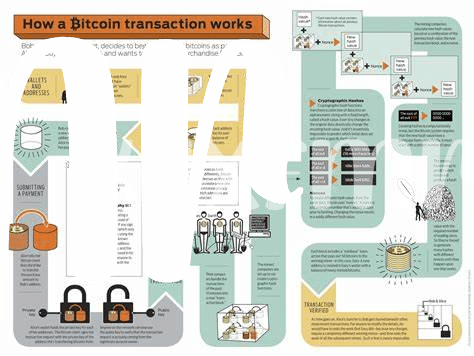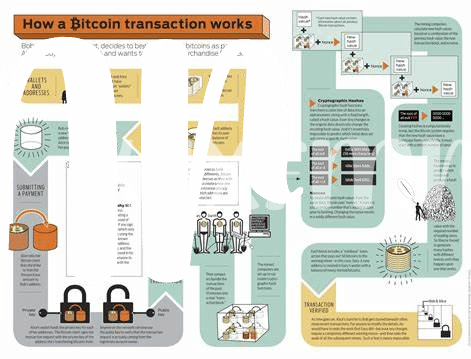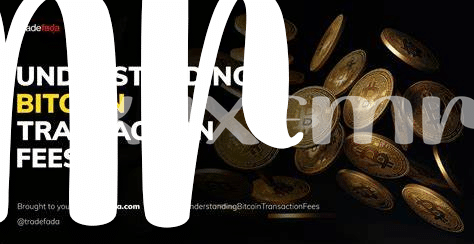🕵️ Understanding Bitcoin Fees: What Are They?

Imagine you’re at your favorite coffee shop, ready to pay for your morning pick-me-up using Bitcoin. Rather than a simple exchange of cash for coffee, there’s a tiny extra cost tacked on, much like a service fee. That’s essentially what Bitcoin fees are – small amounts paid to validate your transaction through the Bitcoin network, ensuring it’s processed securely and added to the blockchain, the public ledger of all transactions. These fees don’t have a fixed rate; instead, they fluctuate based on network activity and transaction size. The more congested the network, the higher the fees, as your transaction competes against others for priority processing. It’s a bit like tipping the barista a little extra to get your coffee first on a busy morning. Here’s a simple breakdown:
| Term | Explanation |
|---|---|
| Bitcoin Fees | Small amounts paid to validate transactions on the Bitcoin network. |
| Blockchain | The public ledger where all Bitcoin transactions are recorded. |
| Network Congestion | When many transactions are submitted at once, causing delays and higher fees. |
Understanding these basics sets the foundation for diving deeper into how to navigate and potentially minimize these fees, making your Bitcoin experiences smoother and more cost-effective.
💡 How Bitcoin Fees Influence Your Transactions
When we talk about sending bitcoins from one wallet to another, think of it as mailing a package. Just like postal services have shipping fees, bitcoin transactions have fees too. But here’s the twist: the fee you pay influences how fast your transaction gets confirmed. Imagine you’re sending a very important package that you want to be delivered super fast; you’d probably opt for express shipping, right? In the bitcoin world, paying a higher fee works similarly; it can help ensure your transaction gets picked up and processed quicker by the network. This is because those validating your transactions (think of them as the postal workers of the bitcoin world) prioritize higher fee transactions. It’s basically a bidding game: the higher your fee, the more attractive your transaction is to be processed first. However, paying too much might mean you’re overspending, while paying too little could leave your transaction stuck in limbo. Balancing cost while maintaining efficiency becomes a key strategy in managing your bitcoin transactions effectively. To understand more about the balance between costs and efficiency in the cryptocurrency world, including the use of sustainable energy sources, visit https://wikicrypto.news/inflation-and-deflation-bitcoin-vs-fiat-currencies-in-2024.
🚀 Factors Affecting the Cost of Bitcoin Fees

When you’re dealing with Bitcoin, think of the fee like a ticket price for your transaction to hop on the blockchain ride. The price of this ticket isn’t fixed; it changes based on a few key players. Imagine the blockchain as a busy highway; the more cars (or transactions) wanting to get through, the busier and slower it gets. During peak hours, if you want your transaction to be prioritized, you might have to pay a little extra. This is the demand factor kicking in. Then, there’s the data size of your transaction. Some transactions are like taking a bus full of people (lots of data) versus just riding a bike (a small amount of data) on the highway. Bigger transactions can require higher fees because they take up more space on the blockchain road. Lastly, the state of the network itself plays a role. Think of it as road conditions; if the network is under heavy stress or undergoing maintenance, it might affect fee prices too. So, to cruise through the Bitcoin highway efficiently, keep an eye on these factors, and you’ll learn to navigate like a pro, avoiding the traffic jams and minimizing your costs.
🧐 Finding the Best Time to Send Bitcoins

Did you know that sending bitcoins doesn’t have the same cost at all times? Yep, much like catching a flight at off-peak times can save you some bucks, moving your digital coins can be cheaper at certain times of the day or week. This magic timing hinges on the network’s activity level – fewer transactions vying for processing mean lower fees! Imagine the network as a highway; the less crowded it is, the smoother your ride will be. To navigate this, think of sending bitcoins when most people are less likely to, maybe during nighttime in major time zones or weekends. It’s a bit of a balancing act but getting it right can keep a few more coins in your pocket.
On your quest for cost-efficiency, staying updated with the latest tech developments is also key. These advancements can significantly influence bitcoin’s operational costs and, by extension, transaction fees. For instance, the integration of renewable energy solutions for bitcoin mining operations in 2024 is a game-changer, potentially lowering costs and making your transactions not just cheaper but also more environmentally friendly. By keeping an eye on such innovations, you’re not just saving money but also contributing to a sustainable future for digital currencies.
💳 Comparing Wallets: Who Offers the Lowest Fees?
Just like shopping for the best deal can save you money on groceries, finding the right wallet to store and send your bitcoins can help you save big on transaction fees. Think of Bitcoin wallets as your personal finance managers in the digital currency world; some are like savvy accountants who know all the tricks to save you money, while others might end up costing you more. Factors such as the size of your transaction, the network’s congestion at the time, and the wallet’s own fee policies play a crucial role in determining how much you end up paying for a transaction. Wallets like Ledger and Trezor, for example, are praised for their security and cost-effectiveness, whereas others might offer quicker transactions at a higher fee. The trick is to compare the fees charged by different wallets under various conditions. Here’s a quick look:
| Wallet Name | Fee Range | Features |
|---|---|---|
| Wallet A | Low-High | Security, User-Friendly |
| Wallet B | Medium | Fast Transactions, High Security |
| Wallet C | Variable | Customizable Fees, Advanced Features |
This comparison not only guides you in selecting a wallet that aligns with your needs but also shines a light on the importance of considering transaction fees as a factor in your choice. By doing a bit of homework, you can ensure that more of your money stays in your pocket.
🛠 Tips and Tricks for Lowering Your Bitcoin Fees

If you’re looking to keep a little more bitcoin in your wallet, then timing and a bit of planning can be your best friends. 🚀 One neat trick is to move your bitcoins when the network is less busy, typically during weekends or late at nights. This is when fewer people are making transactions, so the fees can be lower. Think of it like catching a bus when it’s not rush hour; there’s more room and it costs less. Another smart move is to use a bitcoin wallet that lets you set your own fee. Some wallets automatically set a higher fee to ensure a quick transaction, but if you’re not in a hurry, choosing a lower fee manually can save you some coins.
Besides knowing when to send your bitcoins and tweaking transaction fees, diving deeper into understanding bitcoin’s workings can also save you money. 🧐 For those intrigued by the financial nitty-gritty, finding resources that compare bitcoin with traditional money systems can shed light on potential costs and savings. Bitcoin versus traditional fiat currencies: a comprehensive comparison in 2024 can provide valuable insights, helping you grasp the broader financial implications and how to manoeuvre strategically within the crypto world. Remember, knowledge is power, especially when it translates into cost-efficiency in the dynamic realm of bitcoin.
